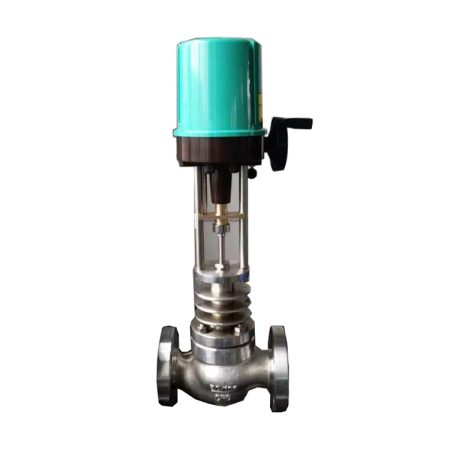
Selecting the right steam control valve takes careful planning. You need to look at all the details of your system. Sometimes, valves stick because of rust or dirt. Cavitation can happen and cause loud noises. Water can build up and cause water hammer or break the valve early. Many engineers have trouble with sizing because they do not have all the data. Some pick the wrong materials that cannot handle hot steam. You can make your system better by adding strainers and drip legs. Use a pneumatic control valve or electric ball valve if needed. Picking the right steam control valve helps your system work well for a long time.
- Common challenges include:
- Valve sticking from foreign particles
- Cavitation and noise concerns
- Sizing difficulties from missing data
- Condensate buildup before steam control valve
- Material compatibility for high temperature and pressure
- Installation of pneumatic ball valve for fast actuation
- our valves often. This helps you find problems early, makes things quieter, and keeps your steam system working well.
Application Requirements
Flow Rate
You need to know the flow rate before picking a steam control valve. The flow rate shows how much steam moves in your system. You should check the highest, lowest, and normal flow rates. This helps you stop problems like loud valves or bad control.
You can find the flow rate by measuring it with tools like orifice plates or vortex flowmeters. You can also figure it out by using math, like heat balance equations. These equations use the heat in steam and the heat in condensate. These ways help you pick the right size for the valve, especially if you cannot measure it directly.
Tip: Always match the valve size to your system’s flow rate and pressure. This helps stop water hammer and keeps the valve safe.
Pressure and Temperature
You must check the highest and lowest pressure and temperature for your application. These numbers show if the valve can handle the steam without breaking. If you pick a valve with the wrong numbers, you can get problems like cavitation, flashing, or choked flow. These problems can make noise, shake the system, or even break the valve.
The right flow rate and pressure make sure the valve works well all the time. Picking the right valve also stops leaks and keeps the system steady. When you choose a valve, always think about the highest and lowest pressures and temperatures your system will have. This keeps your system safe and working.
Media Compatibility
Steam is very tough. It can get as hot as 400°C and have high pressure. You need to make sure the valve materials can handle this. If you use the wrong materials, you might get thermal stress, erosion, or corrosion. These problems can cause leaks or break the valve.
Common materials for steam valves are carbon steel, stainless steel, and special alloys like Inconel. For seals, you should use graphite, PTFE, or metal. These choices help stop leaks and make the valve last longer. Always check that your valve meets the safety rules for leaks.
Note: Good media compatibility keeps your system from failing early and helps your application run well.
System Environment
When you pick a steam control valve, look at your system’s surroundings. The environment can change how the valve works and how long it lasts. Think about things like temperature, pressure, steam quality, and if there are chemicals or solid bits around.
The environment can change fast. High heat and pressure can make valve parts weak. Steam with chemicals like chlorides or sulfides can cause rust. Solid bits can block the valve or make it stick.
Watch out for wet steam in your system. Wet steam has water mixed with steam. This can wear down valve parts and make things unsafe. Erosion can hurt valve trims, like bypass valves and extra steam valves. If erosion happens, you might see leaks or higher temperatures after the valve. Wet steam can also hurt spray water valves and crack pipes. Try to keep wet steam out or control the water, but this is hard sometimes.
- Important things in the environment that affect steam control valves:
- Wet steam wears down parts and can be dangerous.
- Erosion can cause leaks and heat problems.
- Wet steam can break spray water valves and pipes.
- High heat makes valve parts softer and causes rust.
- High pressure puts stress on parts and can crack them.
- Chemicals like chlorides and sulfides can attack valve parts.
- Dirt and solid bits can block flow and wear out the valve.
Pick a valve that can handle your system’s environment. Choose materials that do not rust or wear down easily. Make sure the valve can work with the highest heat and pressure in your system. Clean steam helps the valve last longer. If your steam is dirty, use strainers or separators to protect the valve.
Tip: Always check your system’s environment before picking a steam control valve. This helps you stop problems and keeps your system working well.
Plan to check and fix your valves often. The environment can change over time. Dirt can build up, and chemicals can get stronger. Look at your valves often and change broken parts fast. This keeps your system safe and helps it work for a long time.
Valve Types for Steam
Globe Valves
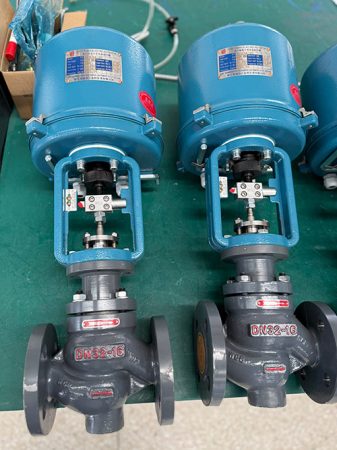
Globe valves are used a lot for steam control. They let you control the flow very well. The shape of the valve helps you change the steam flow slowly. This stops sudden jumps in pressure. Globe valves are good when you need the best control for steam and want things to be exact.
These valves look different from others. Steam has to turn as it goes through the valve. This shape helps the valve close tightly and keeps leaks away. Globe valves work in places with high heat and pressure. The packing inside can handle heat, so the valve lasts longer.
Tip: Pick globe valves if you want tight shutoff and good control in your steam system.
But globe valves have some problems too. The way steam moves inside makes the pressure drop more. You might need a bigger actuator or more force to open the valve. Globe valves also open and close slower than other valves. Even with these problems, globe valves are still a top pick for many engineers because they work well with tough steam and give great control.
| Advantages | Disadvantages |
|---|---|
| Great at sealing | More pressure drop |
| Good for changing flow | Needs more force to use |
| Works in high heat | Slower to open and close |
| Simple to fix | Not good for dirty or thick steam |
Ball Valves
Ball valves are another type used for steam control. They open and close fast with just a quarter turn. Ball valves are the best when you need to stop steam quickly and keep it sealed tight. The valve has a round ball with a hole in it. When you turn the handle, the ball moves to let steam through or block it.
Ball valves are easy to use. You do not need much force to turn them. They are smaller and lighter than globe valves. Ball valves seal very well, so steam does not leak out. Metal-seated ball valves can handle high heat and pressure too.
Ball valves are not great for careful control or changing flow a lot. They work best for turning steam on or off. If you want some control, V-port ball valves are better for that.
Ball valves last a long time and keep sealing well even after many uses. You can use them where you need to stop steam fast, like in emergencies or for instruments.
Butterfly Valves
Butterfly valves are small and do not cost much. You can use them if you need to save space or want a lighter valve. They have a disc that turns to open or close the steam flow. Like ball valves, they open and close fast with a quarter turn.
Butterfly valves can change the steam flow, but not as well as globe valves. The disc in the middle can slow down steam and wear out if used too much for changing flow in tough steam. Some butterfly valves can take high heat and pressure, but not as much as globe or gate valves.
Use butterfly valves for big pipes or when you want quick opening and some flow control. Do not use them if you need very careful control or in super high-pressure steam lines.
Butterfly valves are simple to put in and fix. They are good for changing flow in steam systems that are not too important. Pick them if you want to save money, need fast action, and do not have much space.
Gate Valves
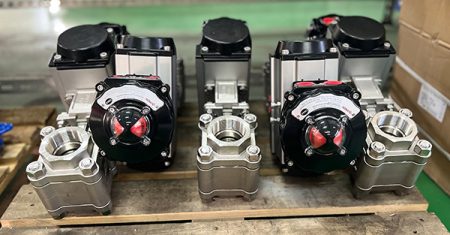
Gate valves give you a simple way to start or stop steam flow. You use them when you want the pipe to be fully open or fully closed. The gate inside the valve moves up or down to block or let steam pass. You do not use gate valves for throttling or changing the flow. If you try to control flow with a gate valve, you can damage the gate and seat. This can cause leaks or make the valve hard to close.
Gate valves work well in large pipes. You often see them in main steam lines or where you need a straight, full flow. These valves have a low pressure drop when open. Steam moves through with little resistance. This helps your system run efficiently.
Tip: Only use gate valves for on/off service. Do not use them if you need to adjust the flow often.
Gate valves can handle high pressure and temperature. They last a long time if you use them the right way. You can find them in power plants, refineries, and other places with big steam systems. Maintenance is easy because the design is simple. You can replace the gate or seat if they wear out.
Here is a quick look at when to use gate valves:
| Use Case | Gate Valve Performance |
|---|---|
| On/off service | Excellent |
| Throttling | Poor |
| High pressure/temperature | Good |
| Large pipe sizes | Very good |
| Precise control | Not suitable |
If you want the best control valve for steam, you should not pick a gate valve. You should use them only when you need a basic open or closed position.
Specialty Valves
Specialty valves help you solve unique steam control problems. You use them when standard valves do not fit your needs. Some common types include diaphragm valves, needle valves, and pressure-reducing valves.
- Diaphragm valves use a flexible membrane to control steam. You use them for clean steam or when you need to avoid leaks.
- Needle valves give you fine control over small steam flows. You use them in instruments or sampling lines.
- Pressure-reducing valves lower steam pressure to a safe level. You use them to protect equipment or keep the system stable.
You may also see control valves for steam with special trims or coatings. These features help the valve last longer in tough conditions. Some specialty valves reduce noise or stop water hammer. Others handle dirty steam or high-speed flow.
Specialty valves can be the best control valve for steam in special cases. Always check your system needs before choosing.
When you pick a specialty valve, look at the steam quality, pressure, and temperature. Ask the manufacturer for advice if you are not sure. Specialty valves can cost more, but they solve problems that standard valves cannot.
Control Valve Selection
Valve Characteristics
You need to know about valve characteristics before you choose one. The way a control valve changes flow depends on its trim design. There are linear and equal percentage valves. Linear valves change flow at the same rate as you move the valve. This is good when the pressure drop stays the same. Equal percentage valves change flow more as you open them more. Each turn gives a bigger change in flow. This helps when the pressure drop changes with flow.
Equal percentage valves are best for steam systems. Steam pressure often goes up and down as flow changes. These valves help you control flow better at low rates. They also give bigger changes at high flow. You get better control when you need it most. Linear valves are simple and easy to use. They do not need much care. Use them if your system has steady pressure. Equal percentage valves react faster and handle pressure swings well. This is important for steam control valve jobs.
Tip: Use valve sizing software to help you pick the right valve type. Match the valve to your system’s pressure and flow for good control.
| Valve Type | Flow Change Pattern | Best Use Case |
|---|---|---|
| Linear | Steady, proportional | Constant pressure, simple systems |
| Equal Percentage | Exponential | Changing pressure, dynamic steam flow |
Sizing Basics
Getting the right valve size is very important. You need to know your lowest, normal, and highest flow rates. You also need to check the pressures before and after the valve. Write down all the process details before you start sizing. If you miss something, you might pick the wrong valve.
Follow rules like ANSI/ISA-75.01.01 and IEC 60534-2-1 for sizing. These rules help you match the valve to your pipe, pressure, trim, and flow. You should also think about noise and fluid density. Always write down your process details and design needs. This means flow rate, inlet and outlet pressures, temperature, and fluid type.
Note: Do not just use vendor sizing programs. Use your own data and judgment to size the valve right.
Here are the main steps for picking and sizing a control valve:
- Gather all process data: flow rates, pressures, temperatures.
- Pick the right valve type and characteristic.
- Use sizing math and follow the rules.
- Check if you need tight shutoff or a separate shutoff valve.
- Find the flow coefficient (Cv) you need.
- Look at the piping and pressure recovery.
- Make sure the valve will be 60% to 80% open at max flow.
Flow Coefficient (Cv)
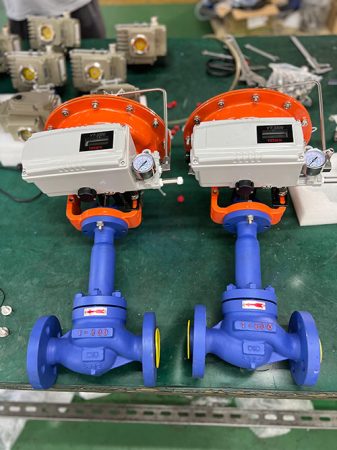
The flow coefficient (Cv) shows how much steam goes through a valve at a set pressure drop. You must figure out Cv to size your valve right. Steam is a compressible fluid, so Cv math is different from liquids.
For steam valve sizing, you need to know if the flow is critical or not. If the outlet pressure is about 58% of the inlet, you have critical flow. In this case, divide the steam flow (lb/hr) by 1.61 times the inlet pressure (psia) to get Cv. If the outlet pressure is higher than 58% of the inlet, use the non-critical formula. Divide the steam flow by 2.1 times the square root of the sum of inlet and outlet pressures and their difference.
If you use superheated steam, use a correction factor. Multiply the saturated steam Cv by (1 + 0.00065 × temperature difference above saturation in °F). This helps you match the valve to your steam.
Tip: Try to keep the control valve between 60% and 80% open at max flow. This gives you the best control and keeps the valve from wearing out too soon.
| Flow Condition | Cv Calculation Method |
|---|---|
| Critical (choked) | Cv = Steam flow (lb/hr) / [1.61 × inlet pressure (psia)] |
| Non-critical | Cv = Steam flow / [2.1 × √((P1 + P2) × (P1 – P2))] |
| Superheated Steam | Cv × (1 + 0.00065 × ΔT above saturation) |
Picking a control valve means matching Cv to your system. You must check your process data and use the right math. This makes sure your steam control valve will work safely and well.
Sizing Range
When you choose a steam control valve, you must pay close attention to the sizing range. The sizing range tells you how much the valve should open during normal operation. If you size the valve correctly, you get better control, longer valve life, and fewer problems.
You should size your valve so it operates between 60% and 80% open at maximum flow. At minimum flow, the valve should not be less than 20% to 30% open. This range gives you the best balance between control and durability. If the valve opens too little, it becomes hard to control the flow. If it opens too much, you risk wearing out the valve parts quickly.
Tip: Always check that your valve will not be fully open or barely open during normal use. Staying in the recommended range helps you avoid noise, vibration, and early failure.
Here is why the sizing range matters for control valve selection:
- Better Control: The valve responds smoothly to changes in flow. You can make small adjustments without sudden jumps.
- Longer Life: The valve parts do not wear out as fast. You avoid damage from high-speed steam or pressure drops.
- Lower Costs: You spend less on repairs and replacements. The system runs more efficiently, saving energy.
| Valve Opening (%) | Performance Impact |
|---|---|
| 0–20 | Poor control, risk of instability |
| 20–60 | Good control, safe operation |
| 60–80 | Optimal control and efficiency |
| 80–100 | Risk of wear, loss of control |
If you pick a valve that is too big, it will stay almost closed most of the time. This makes it hard to control the flow and can cause noise or vibration. If you pick a valve that is too small, it will stay wide open and may not handle the flow you need. Both mistakes can lead to early valve failure and higher costs.
During control valve selection, always use your system’s flow data to check the sizing range. Make sure the valve will work in the best part of its range. This simple step helps you get the most from your steam system.
Bonnet Selection for Steam Control Valves
Bonnet Types
Standard bonnets
Standard bonnets are used in most steam valve jobs. They work well when the temperature and pressure are not too high. These bonnets have simple shapes, like screwed, union, or flanged ends. Flanged bonnets are good for bigger pipes and higher pressure. Most steam systems can use standard bonnets without problems.
Extended bonnets
Extended bonnets are made for steam lines with lots of heat or pressure. Their longer shape keeps heat away from the valve stem and packing. This helps protect the inside parts from getting too hot. It is also easier to add insulation with these bonnets. Use extended bonnets when steam gets hotter than normal. You often see them on ball valves and globe valves in hot steam lines.
Bellows-sealed bonnets
Bellows-sealed bonnets stop leaks and keep steam inside. You need these bonnets when leaks could be dangerous or waste product. The bellows make a seal so steam cannot escape along the stem. Pick bellows-sealed bonnets for jobs where safety or clean steam is important.
Pressure-sealed bonnets
Pressure-sealed bonnets are best for steam lines with very high pressure. The steam pushes the seal tighter as pressure goes up. This makes the valve safer and stops leaks. You find these bonnets in power plants and other places with strong steam pressure. They last longer and help prevent seal problems.
| Bonnet Type | Typical Application in Steam Control Valves |
|---|---|
| Standard Bonnet | General steam valve service |
| Extended Bonnet | High-temperature, high-pressure steam lines; insulation and expansion needs |
| Bellows Seal Bonnet | Minimal leakage, critical sealing in steam control valves |
| Pressure-Sealed Bonnet | High-pressure steam circuits; enhanced safety and sealing |
Selection Criteria
Temperature and pressure ratings
Always check how hot and how much pressure your system has. Extended bonnets keep heat away from packing and actuators. Bellows-sealed bonnets seal better when pressure is high. Make sure the bonnet matches your system’s highest temperature and pressure.
Thermal expansion considerations
Hot steam makes metal parts get bigger. Extended bonnets help by keeping heat away from parts that can be hurt. Pick bonnets that let metal move without hurting the stem or packing.
Leakage prevention and sealing performance
Leaks can break equipment and cause danger. Bellows-sealed and pressure-sealed bonnets seal very well. Choose the bonnet that fits your system’s need to stop leaks.
Tip: Always look for ASME and API standards when picking a bonnet. This helps keep your system safe and working right.
Material Compatibility
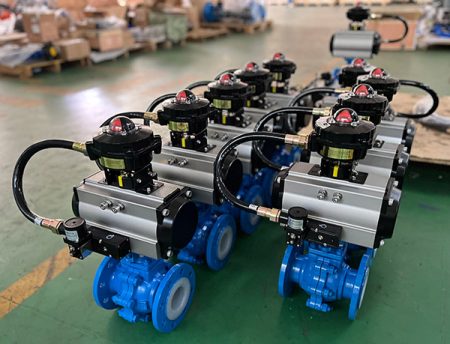
Material selection for steam service
Pick bonnet materials that can take heat and do not rust. Carbon steel is fine for lower heat. Stainless steel and special alloys are better for hotter or more corrosive steam. These materials help your valve last longer and stay safe.
Corrosion and erosion resistance
Steam can make metal rust or wear away. Stainless steel and special alloys help stop this damage. Extended bonnets also keep inside parts cooler, so they last longer.
| Consideration | Explanation |
|---|---|
| Material Choice | Carbon steel suits moderate temperatures; stainless steel and alloys resist corrosion and heat. |
| Temperature Rating | Carbon steel handles up to ~427°C; stainless steel works up to ~600°C and in corrosive steam. |
| Pressure Classes | Pressure-seal bonnets improve sealing in high-pressure steam circuits. |
| Corrosion Resistance | Stainless steel and alloys prevent chemical damage and galvanic corrosion. |
| Design Considerations | Extended bonnets isolate stems and packing from steam heat. |
Maintenance and Reliability
Ease of inspection and replacement
You should check steam control valve bonnets often. This helps you find problems early and keeps things safe. Look for leaks near the bonnet and flanges. Listen for hissing, which can mean a leak. Make sure yoke clamp bolts are tight.
Before fixing the valve, turn off and release pressure from the line. Take the valve apart slowly and carefully. Write down or take pictures of how parts fit together. Look at the seat, disc, stem, and packing for any damage. Clean and oil the stem and bonnet with steam-safe products. If packing is worn out, take it out and put in new graphite or PTFE rings. Place the joints in different spots to help stop leaks. When done, put the valve back together and tighten all bolts to the right level.
Tip: Test the valve for leaks and make sure it works before using it again. Do a hydro-test at 1.5 times the top working pressure. Try a live-steam test if you can.
Impact on valve longevity
Taking care of your valve bonnets helps them last longer. Checking and cleaning the valve stops small issues from getting worse. Oiling moving parts keeps them smooth and helps them last. Changing old parts, like packing and seats, stops leaks and keeps the valve working well.
A bonnet in good shape protects the stem and packing from heat and pressure. This lowers the risk of blow-by and keeps the seal tight. Using the right bonnet for your steam helps stop rust and wear. This means fewer breakdowns and less time when your plant is not working.
| Maintenance Task | Benefit to Valve Longevity |
|---|---|
| Regular inspection | Early problem detection |
| Cleaning and lubrication | Less wear and smoother action |
| Timely part replacement | Fewer leaks and failures |
| Correct assembly | Stronger seals and safety |
Manufacturer recommendations
Always do what the manufacturer says for your steam control valve bonnets. Use the right tools and steps to keep your warranty. Follow the schedule for checking and replacing parts. Many companies want you to use a preventive maintenance plan. This plan has regular checks, cleaning, oiling, and changing parts on time.
Look for updates to rules like ASME Section I and VIII or the National Board Inspection Code (NBIC). These rules help keep your valves safe and working well. If you are not sure, ask the manufacturer for help with materials, care, and repair. Using the right valve and following expert advice helps you avoid danger and keeps your system running.
Note: A good maintenance plan, based on what the manufacturer says, helps your steam control valves stay safe and last a long time.
Trim and Seat Selection
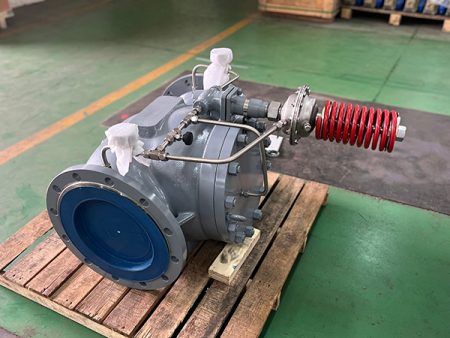
Trim Types
Plug and cage designs
You will find plug and cage designs in many steam control valves. The plug moves up and down to change the flow. The cage surrounds the plug and guides its movement. This design helps you control the flow with precision. Plug and cage trims also reduce noise and vibration. You can choose different shapes for the plug to match your control needs. For example, a contoured plug gives you smooth flow changes, while a quick-opening plug lets you move a lot of steam fast.
Ported and unported trims
Ported trims have holes or slots that direct the steam flow. These ports help you control how fast the steam moves through the valve. Ported trims work well when you need stable control and want to avoid sudden pressure drops. Unported trims do not have these holes. They are simple and best for basic on/off service. When you make your selection, think about how much control you need and how the steam will move through the valve.
Specialty trims for noise or cavitation control
Specialty trims help you solve tough problems like noise and cavitation. Cavitation happens when steam changes to water and back, causing bubbles and damage. You can use multi-stage or multi-path trims to slow down the steam and stop cavitation. These trims also lower noise by spreading out the pressure drop. If your system has high pressure or makes a lot of noise, specialty trims can protect your valve and keep it working longer.
Tip: Choose equal percentage trims for stable control in steam systems with changing pressure. Linear trims work best when the pressure drop stays steady.
Seat Materials
Metal-to-metal seats
Metal-to-metal seats are strong and last a long time. You should use them in high-pressure and high-temperature steam systems. Materials like Stellite and stainless steel resist wear and corrosion. These seats can handle tough steam and keep sealing even when the system gets hot. Metal seats do not deform easily, so they work well in harsh conditions.
Soft-seated options
Soft-seated options use materials like PTFE or PEEK. These seats give you a tight seal and stop leaks. PEEK works better than PTFE in high heat and pressure. Soft seats are good for lower pressure steam or when you need a bubble-tight shutoff. However, they can wear out faster in hot or dirty steam. Always check the temperature and pressure ratings before making your selection.
Material compatibility with steam and contaminants
You must pick seat materials that match your steam quality. If your steam has chemicals or dirt, choose materials that resist corrosion and abrasion. Carbon-filled TFE and reinforced PTFE work well for many steam jobs. For very high temperatures, use metal or ceramic seats. The right material keeps your valve sealing well and lasting longer.
| Material | Temperature Range | Performance in Steam Service |
|---|---|---|
| Carbon filled TFE | -29°C to 260°C | Good for steam, resists chemicals |
| PEEK | -70°F to 600°F | Handles high heat and pressure, keeps seal under tough conditions |
| PTFE | -40°C to 204°C | Chemically resistant, not for high pressure/temperature |
| Metal (Stellite) | Up to 600°C | Hard, resists wear and corrosion |
Wear, Erosion, and Sealing
Common wear mechanisms in steam service
Steam moves fast and can carry dirt or rust. This causes wear on the valve trim and seat. High-velocity steam can erode the seat, leading to leaks. Flashing, where steam turns to water and back, can damage the trim. Solids in the steam scratch and wear down the parts. Scale and sludge can block the valve and stop it from sealing.
Erosion resistance strategies
You can fight erosion by choosing hard trim materials like Stellite or carbide. Multi-stage trims slow down the steam and spread out the pressure drop. This reduces the force on any one spot and helps the valve last longer. Regular inspection and cleaning also help you catch wear early and keep the valve working.
Seal integrity and leakage prevention
A good seal keeps steam inside the valve and stops leaks. Metal seats give you strong seals in hot steam. Soft seats work well for tight shutoff but may not last as long in tough conditions. Energized seals can help keep the seal tight when pressure and temperature change. Always check your valve for leaks and replace worn parts quickly.
Note: Regular maintenance and the right material selection help you avoid leaks and keep your steam control valve reliable.
Selection Guidelines
Matching trim and seat to pressure, temperature, and media
You must pick trim and seat materials that fit your steam system. First, check the full temperature range in your system. If steam is hotter than 600°F (315°C), use strong cobalt alloys like Stellite or nickel alloys. These materials stay strong and do not wear out fast in high heat. If your system has high pressure or fast steam, use hard-faced or tough materials. This helps stop erosion and keeps the valve working longer.
Look at what is in your steam. If there are impurities, stainless steel like 316 SS or Stellite overlays are good choices. These materials do not rust and can handle chemicals. If your system might get pitting or cavitation, pick alloys that fight oxidation and erosion. Many engineers use API trim numbers like 12 or 16. These trims mix 316 stainless steel with Stellite overlays for extra strength in tough steam jobs.
Here is a simple guide to help you match trim and seat materials to your steam system:
| Guideline Aspect | Recommendation / Consideration |
|---|---|
| Operating Temperature | Use Stellite or nickel alloys above 600°F (315°C). |
| Pressure and Flow Velocity | Pick hard-faced materials for high pressure or fast flow. |
| Fluid Chemistry | Choose 316 SS, Stellite overlays, or alloys for steam with impurities. |
| Corrosion and Erosion | Select alloys that resist oxidation, pitting, and cavitation. |
| API Trim Numbers | Use trims like 12 and 16 for high wear and corrosion resistance. |
| Selection Process | Analyze process conditions and material compatibility. |
| Maintenance Recommendations | Inspect trim surfaces and moving parts often. |
Balancing cost, durability, and maintenance
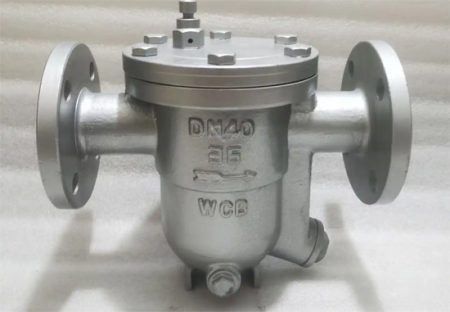
You want a valve that lasts but does not cost too much. Metal seats and hard trims cost more at first, but last longer in hot, high-pressure steam. Soft seats cost less and seal well, but wear out faster in tough steam. If your system is cooler and has less pressure, soft seats may save money. For harsh steam, spend more on strong materials to avoid repairs.
Think about how often you can fix your valves. If your plant cannot stop often, pick trims and seats that need less care. Stainless steel and Stellite overlays help you go longer without changing parts. Checking your valves often helps you find problems early and avoid big failures.
Tip: Spending more on the right trim and seat at the start can save money on repairs and downtime later.
Consulting manufacturer recommendations
Always check what the manufacturer says before picking trim and seat materials. Manufacturers test their valves in many steam jobs. They know which materials work best for each job. Look for their advice on temperature, pressure, and chemical compatibility. Follow their care schedules to keep your valves safe and working.
If you have a special steam job, ask the manufacturer for help. They can suggest custom trims or coatings for your needs. Using their advice helps you avoid mistakes and keeps your system running well.
Note: Manufacturer support and technical data sheets are the best place to start for safe, long-lasting valve selection.
Materials and Durability
Material Compatibility
You need to pick valve materials that fit your steam system. Steam can get very hot and may have chemicals or rough bits in it. If you choose the wrong metal, your valve might leak or break early. Look for metals that can take heat, rust, and wear.
- Carbon steel is good for most steam jobs. It can take high heat and pressure.
- Stainless steel does not rust and lasts longer in wet or dirty steam.
- Bronze works for lower pressure steam and helps stop rust.
- Alloy steels, nickel alloys like Inconel or Hastelloy, and super-austenitic stainless steel (like 254SMO) give extra safety in tough places.
- Titanium fights pitting and crevice rust, even when it is hot.
- Metal seals in gate and globe valves last long and seal well in rough or rusty steam.
- Hard coatings and metal matrix composites, such as Neles WearBlock?, help stop wear and rust.
Tip: Do not use plastic or composite materials for steam control valves. They cannot take high heat or pressure and may break in sunlight.
When you pick materials, think about how long they last, how easy they are to fix, and how much they cost. The right metal helps your valve work longer and means less time fixing it.
Erosion and Corrosion Resistance
Steam can carry dirt, chemicals, or rough bits. These things can wear out valve parts and cause leaks. You need metals that fight wear and rust to keep your system safe.
- Metal-sealed valves fight wear from fast steam and rough bits. They keep sealing parts strong and stop leaks.
- Stainless steel and super-austenitic alloys, like 254SMO, stand up to harsh gases and stress rust.
- Titanium (grades 2 and 5) fights pitting and crevice rust, so it is good for tough steam.
- Hard coatings and treatments, such as SuperExpanite? or Neles WearBlock?, make valves last longer.
- Ceramics are great at stopping wear but can crack if the heat changes fast.
Note: Always match your valve metal to the steam and dirt in your system. This helps stop early breaks and keeps your plant working.
Temperature Tolerance
Steam control valves get very hot. If your valve metal cannot take the heat, it might bend, leak, or break. You need metals that stay strong and keep their shape when hot.
| Aspect | Explanation | Examples / Details |
|---|---|---|
| Temperature Tolerance Impact | Valves in steam up to 400°C break down fast if the metal cannot take the heat. | Heat makes metal grow and shrink, which can make it weak and bent. |
| Material Degradation Effects | Weak metal loses strength, leaks more, bends, and does not seal well. | Valve parts like discs, balls, or holes can change shape and not close right. |
| Suitable Valve Materials | Good, heat-proof metals make sure valves work well in hot steam. | Carbon steel (ASTM A216), stainless steel, bronze, alloy steel, nickel alloys (Inconel, Hastelloy). |
| Sealing Materials | Seals must take high heat to stop leaks. | Graphite, PTFE, metal seals. |
| Operational Considerations | Right valve size stops fast water drops, which make metal break faster. | Good sizing lowers heat stress and helps valves last. |
| Leakage and Reliability | Too much leaking wastes energy and is not safe; valves with good heat tolerance leak less. | Leakage classes (ANSI Class IV or higher) mean the valve is strong and safe. |
Always check how hot your valve metal can get. Carbon steel works up to 427°C. Stainless steel and nickel alloys work above 600°C. For seals, graphite and metal are best for high heat. PTFE is okay for cooler steam.
Tip: Picking the right size and metal for your valve helps stop leaks and keeps your system safe. Valves that take high heat last longer and save money.
Actuation Methods
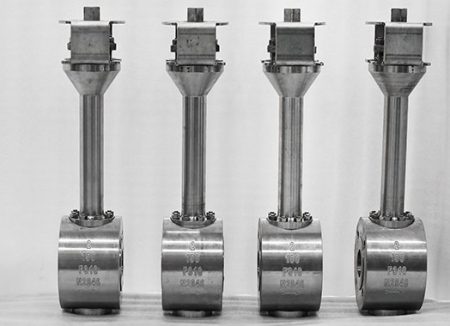
Manual
Manual actuation is a basic way to control steam valves. You use your hand to turn a wheel or lever. This opens or closes the valve. It works well when you do not need to change the valve often. You do not need power or air to use it. Manual valves last a long time and are easy to take care of. They work in tough places and in systems with medium pressure.
Manual actuation is not very exact. You have to move the valve yourself. This can be hard if the valve is big or the pressure is high. Manual valves are not good for systems that need quick or many changes. You might see them in backup pipes or where machines are not needed.
Tip: Use manual actuation for simple steam jobs or emergency shutoff spots. It saves money and is easy to maintain.
| Actuation Method | Advantages | Limitations |
|---|---|---|
| Manual | Easy to use, strong, cheap, little upkeep, no power needed | Not exact, needs hands-on use, not good for high pressure or lots of changes |
Electric
Electric actuation lets you move steam valves with motors. You can control the valve with buttons or signals. This makes it easy to set the valve just right. You can connect electric actuators to computers or control systems. They are good for places where you want to control things from far away.
Electric actuators need steady power to work. You should check for problems with the motor or circuits. They cost more at first and have more parts inside. Sometimes you need to oil the moving parts. Electric actuation is best indoors and in places that are not too hot or cold. You get good control, but they may not work well with very strong force or in extreme heat.
Note: Pick electric actuation if you want to automate, connect, and control valves exactly. It works best where power is always on and you can check the system often.
| Actuation Method | Environmental Suitability | Safety and Maintenance | Performance Notes |
|---|---|---|---|
| Electric | Best indoors, works from -30°C to +70°C | Needs oiling sometimes, can break, may cause fire | Very exact, slower than pneumatic, not for very strong force |
Pneumatic
Pneumatic actuation uses air to move steam valves. It works fast and can push with a lot of force. Pneumatic actuators work in very hot or cold places. They are safe to use where there might be fire or dangerous gases. These actuators do not make sparks, so they will not explode.
Pneumatic systems need clean, dry air to work. They can be noisy because of the moving air. Air can make the control less steady. You must keep the air system clean and working. Pneumatic actuators are good when you need the valve to move quickly and safely. You can set them to close or open by themselves if something goes wrong.
Tip: Choose pneumatic actuation for steam valves in hard places or when you need quick, safe movement. This type is strong and safe.
| Actuation Method | Advantages | Limitations |
|---|---|---|
| Pneumatic | Moves fast, works in hot or cold, safe in danger zones, does not explode | Not very steady, loud, needs air system to work |
Actuator Selection
Picking the right actuator helps your steam control valve work well and safely. You need to think about a few key things before you choose. Every steam job is different, so match the actuator to what your system needs.
First, check what power you have at your plant. If you have air, pneumatic actuators work fast and give good control. They can handle hot or cold places and tough jobs. If you only have electricity, electric actuators are accurate and can do on/off or modulating jobs. Electric actuators need wires and steady power. Self-acting valves use steam pressure to move but only work for simple jobs.
Think about where the actuator will be used. If your plant has explosive gas or dust, pneumatic actuators are safer because they do not make sparks. Electric actuators need special safety ratings, like NEMA VII, for dangerous places. If your system is dirty or has chemicals, pick actuators with seals and coatings that stop damage.
How the valve moves is important. Rotary valves need actuators that turn. Linear valves need actuators that push or pull. Multi-turn valves need actuators that spin many times. Always match the actuator to how the valve moves.
Sizing is very important. You need to know how much force or torque is needed to move the valve. This depends on valve size, supply pressure, design, and friction. If the actuator is too weak, the valve might not open or close. If it is too strong, it could break the valve. Ask an expert for help if you are not sure about sizing.
Safety features keep your system safe. Many actuators have fail-safe settings. You can set the valve to stay open or closed if power or air stops. Pneumatic actuators often use spring return for safety. Electric actuators need devices to stop overheating.
How you want to control the valve matters too. If you just need on/off, basic actuators are fine. If you want to change flow a lot, pick actuators made for many cycles and modulating jobs.
Cost is also something to think about. Pneumatic actuators cost less for big jobs but need air and care. Electric actuators cost more at first but give you more control choices. Always balance cost with how long the actuator will last and how much care it needs.
Here is a simple checklist for picking an actuator:
- Check what power you have (air, electricity, or self-acting)
- Match actuator to how the valve moves (rotary, linear, multi-turn)
- Size the actuator for valve force and torque
- Think about where it will be used (dangerous, dirty, or dusty)
- Pick safety features (fail-safe, spring return, protection)
- Choose control type (on/off or modulating)
- Balance cost with how strong and easy to care for it is
Tip: Always look at your system and site before picking an actuator. The right choice keeps your steam control valve safe and working well.
| Factor | What to Check | Why It Matters |
|---|---|---|
| Power Source | Air, electricity, or self-acting | Makes sure actuator works right |
| Valve Operation Type | Rotary, linear, multi-turn | Matches actuator to valve |
| Sizing | Torque, force, supply pressure | Stops valve problems |
| Environment | Dangerous, dirty, or dusty | Protects actuator and system |
| Safety | Fail-safe, spring return, protection | Keeps system safe |
| Control Function | On/off, modulating | Fits what you need |
| Cost | First and long-term costs | Saves money in the long run |
Installation and Space
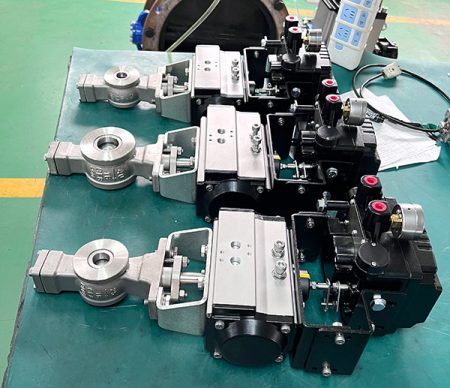
Space Constraints
You often face tight spaces when installing steam control valves. Small areas can make your job harder. You need to pick valves that fit well and still work right. Compact valve designs, like the GX series, help you solve this problem. These valves fit into tight spots without losing performance.
- Compact valves save space in crowded plants.
- You can install them close to other equipment.
- They make future maintenance easier.
- You avoid extra costs for pipe changes.
Proper sizing matters even more in small spaces. You must check the valve’s alignment and orientation. If you install a valve the wrong way, it may not work or could wear out faster. Sometimes, you need a professional installer to fit valves in very tight areas. Careful planning helps you avoid mistakes and keeps your system safe.
Tip: Always measure your space before you buy a valve. Draw a simple layout to see how everything will fit.
Installation Requirements
You need to follow key steps for a good installation. Start by checking the valve’s size and weight. Make sure the support structure can hold it. Use the right gaskets and bolts for steam service. Tighten all bolts to the correct level. This stops leaks and keeps the valve safe.
Check the flow direction marked on the valve body. Install the valve so steam flows the right way. Wrong installation can cause noise, vibration, or even damage. Keep the valve accessible for future checks and repairs. Leave enough room around the valve for tools and hands.
- Use pipe supports to stop stress on the valve.
- Clean the pipes before you install the valve.
- Remove dirt and debris that could block the valve.
- Test the valve for leaks after installation.
Note: Good installation helps your valve last longer and work better.
System Balancing
System balancing keeps your steam system running smoothly. You need to make sure each valve gets the right amount of steam. If one valve takes too much, others may not get enough. This can cause uneven heating or pressure drops.
Balance the system by adjusting each valve. Use flow meters or pressure gauges to check the results. You may need to fine-tune the settings after the system starts. Balanced systems save energy and reduce wear on valves.
| Balancing Step | Why It Matters |
|---|---|
| Adjust valve settings | Ensures even steam flow |
| Check with instruments | Confirms correct operation |
| Re-check after startup | Catches any changes or issues |
A well-balanced system helps you avoid problems and keeps your plant efficient. Always review your system after installing new valves.
Factors to Consider When Choosing Steam Control Valves
Noise and Cavitation
Noise and cavitation can cause big problems in steam systems. When steam moves through a valve too fast, it can make loud sounds. This noise can bother workers and damage equipment. Cavitation happens when steam changes to water and back again inside the valve. This process creates bubbles that burst and hit the valve parts. Over time, these bubbles can eat away at the metal and cause leaks.
You can lower noise by picking the right valve trim. Special trims break up the steam flow and spread out the pressure drop. This helps stop loud sounds and keeps the valve safe. If you see signs of cavitation, like vibration or pitting on the valve, you need to act fast. Choose valves with multi-stage or anti-cavitation trims for high-pressure jobs. These designs protect your system and help your valve last longer.
Tip: Always check the noise level and look for signs of cavitation during regular inspections. Early action saves money and keeps your plant safe.
Dynamic Response
Dynamic response means how fast and accurately your valve reacts to changes. In steam systems, you want the valve to open or close quickly when the control system sends a signal. A slow valve can cause pressure swings or temperature spikes. This can hurt your process and waste energy.
You should look at the actuator type and valve design. Pneumatic actuators move fast and work well in most steam jobs. Electric actuators give you more control but may react slower. The size and weight of the valve also affect how quickly it moves. For best results, match the actuator to your system’s needs. Test the valve’s response before you start full operation.
A good dynamic response keeps your process stable. You get better product quality and use less energy. This is one of the key factors to consider when choosing steam control valves.
Maintenance Needs
Maintenance needs play a big role in valve selection. Some valves need more care than others. Globe valves and valves with special trims may need regular checks and cleaning. Ball and butterfly valves often need less upkeep, but you still must inspect them for leaks or wear.
You should plan for easy access to the valve. Pick designs that let you replace parts without taking out the whole valve. Look for valves with clear instructions and support from the manufacturer. Regular maintenance stops small problems from turning into big failures.
Note: Always keep a maintenance log. Write down when you check, clean, or fix each valve. This helps you spot patterns and plan for future work.
When you think about the factors to consider when choosing steam control valves, always include maintenance needs. A valve that is easy to care for will save you time and money over its life.
Reliability
Reliability is very important when picking a steam control valve. You want the valve to work every time you use it. A reliable valve keeps your system safe and stops expensive shutdowns. When choosing, check how well the valve works over time and how often it needs fixing.
Check the valve’s history. Ask the maker for numbers on how often it fails and how long it lasts. Good valves have strong bodies, tough seals, and designs that work well. You should see test results for high heat and pressure. Look for valves that meet rules like ASME and API. These rules show the valve can handle hard steam jobs.
Tip: Always ask for proof that the valve is reliable. Good makers will show you test results and what customers say.
Think about how the valve is built. Simple valves with fewer moving parts break less. Valves with hard trim, like Stellite or stainless steel, last longer in hot steam. Metal-to-metal seats do not wear out fast and keep a tight seal. Bellows-sealed bonnets stop leaks and keep steam away from the stem. Pressure-sealed bonnets are good for high-pressure pipes.
How easy it is to fix the valve matters too. Pick valves that are simple to check and repair. If you can get to the trim and seats quickly, you can change worn parts fast. Some valves let you change packing or seals without taking the valve out. This saves time and keeps your plant working.
Think about where the valve will be used. Steam with dirt or chemicals wears out valves faster. If your steam has water or rough bits, pick valves with materials that fight erosion. Stainless steel and special alloys stop rust and corrosion. Hard coatings give extra safety.
Here is a table to help you compare reliability features:
| Reliability Feature | Why It Matters | What to Look For |
|---|---|---|
| Strong body materials | Handles heat and pressure | Carbon steel, stainless steel |
| Hard trim and seats | Resists wear and erosion | Stellite, alloys |
| Proven design | Fewer failures | Simple, tested construction |
| Easy maintenance | Less downtime | Quick access, replaceable parts |
| Industry standards | Trusted performance | ASME, API certifications |
You should also read what other customers say and look at case studies. Real stories show how valves work every day. Reliable valves get good reviews for lasting long and having few problems.
Reliability helps you save money and keeps your plant safe. Pick valves with strong materials, simple builds, and good help from the maker. Check and test your valves often to find problems early.
Valve Selection Guide
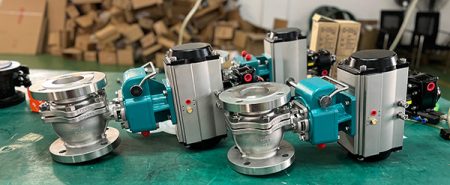
Stepwise Checklist
You need a simple plan to pick a steam control valve. A checklist helps you not miss steps. It also helps your system work well. Follow these steps to make a good choice:
- Define Your Application Needs
Write down your flow, pressure, and temperature. Check what is in the steam. Look at where the system is and any special needs. - Choose the Right Valve Type
Decide if you want globe, ball, butterfly, gate, or specialty valves. Pick the type that fits your control needs, like on/off or changing flow. - Size the Control Valve Properly
Use correct data to find the flow coefficient (Cv). Make sure the valve is open 60% to 80% at top flow. - Select Suitable Materials
Pick metals and seals that can take your steam. Look for ones that do not rust or wear out fast. - Pick the Correct Bonnet and Trim
Choose bonnet and trim that fit your heat, pressure, and sealing needs. - Determine Actuation Method
Pick manual, electric, or pneumatic actuation. Choose based on your power and how you want to control the valve. - Plan for Installation and Space
Measure your space. Make sure you can reach the valve for checks and repairs. - Test and Inspect After Installation
Do pressure and working tests. Look for leaks and make sure the valve works right. - Set Up Regular Maintenance
Plan checks, cleaning, and calibration. Change old parts before they break.
Tip: Use this guide each time you put in or upgrade a valve. It helps you make smart choices and keeps your system working well.
Common Mistakes
You can stop many problems if you know the most common mistakes. Here are things to watch out for:
- If you do not line up the valve right, it can leak or break.
- Using the wrong gasket or not tightening bolts right can cause leaks.
- Putting the valve in backwards makes it work badly or break.
- If you cannot reach the valve, fixing it is hard.
- Not enough support, especially for tall pipes, can hurt the valve.
- Not checking valve details or not cleaning pipes lets dirt in and wears out the valve.
You can stop these mistakes by using tools to line up the valve. Pick the right gasket. Check the valve’s direction. Make sure you can reach the valve. Give strong support. Always check the valve details before you start. Clean the pipes to get rid of dirt. These steps help your valve last longer.
Note: Wet steam can damage valve parts fast. Pick strong materials and install the valve to fight wear and erosion.
Efficiency Tips
You can help your steam control valve work better for a long time. Use these tips to save energy and money:
- Make a schedule for regular checks and tests.
- Use special software to check how the valve works and find problems early.
- Choose to fix, replace, or upgrade the valve based on what saves more in the long run.
- Clean the valve parts and check them to stop wear and bad performance.
- Test the valve with good tools to make sure it works right.
- Use tools that can warn you about problems before they happen.
- Think about adding new tech to make the valve work better.
Always pick steam control valves that fit your system. Follow the maker’s rules for putting in and lining up the valve. Test the valve after you install it. Clean and set up control systems often. Change old parts fast to stop problems. Doing regular care helps your system work better and last longer.
Getting help from steam experts can make your system better. Regular checks and watching your system help you save energy and keep things running well.
| Efficiency Tip | Benefit |
|---|---|
| Regular maintenance | Makes the valve last longer |
| Diagnostic tools | Finds problems early |
| Predictive analysis | Stops surprise breakdowns |
| Retrofitting technology | Makes the valve work better |
| Accurate testing | Keeps the valve working right |
Use these tips to keep your valve working well. Your system will run better and cost less over time.
Choosing the right steam control valve starts with looking at what your system needs. You should pick a valve type that fits your job. Make sure the materials match your steam conditions. If you follow each step, your system works better and lasts longer.
- Check how much steam moves, how strong the pressure is, and how hot it gets.
- Choose the right valve and actuator for your system.
- Think about how you will put in the valve and keep it working.
For the best results, look at the valves you have now and talk to a steam expert. Making smart choices helps keep your plant safe and saves money.
FAQ

What is the most important factor when choosing a steam control valve?
You need to pick a valve that matches your system’s pressure, temperature, and flow. This keeps your system safe and working well. Always look at your system’s numbers before you choose.
Can you use a ball valve for steam control?
Ball valves work for turning steam on or off. If you want to control the flow carefully, globe valves are better. Ball valves do not let you make small changes in most steam systems.
How often should you maintain a steam control valve?
Check and take care of your valve every 6 to 12 months. Look for leaks, worn parts, or buildup. Follow the maker’s plan for the best results.
What materials work best for steam valve seats?
Metal seats like stainless steel or Stellite work well in high heat and pressure. Use soft seats only if your steam is low pressure. Always make sure the seat matches your steam type.
How do you size a steam control valve?
Figure out the flow coefficient (Cv) using your system’s flow, pressure, and temperature. Pick a valve that stays open between 60% and 80% when steam is at its highest.
What causes noise in steam control valves?
Noise happens when steam moves too fast, drops pressure, or from cavitation. You can lower noise by using special trims or multi-stage valves. Checking and cleaning the valve often also helps stop noise.
Do you need special valves for dirty or wet steam?
Yes. Use valves made with strong, erosion-resistant materials and special trims. Put in strainers or separators to keep dirt and water away from the valve.
